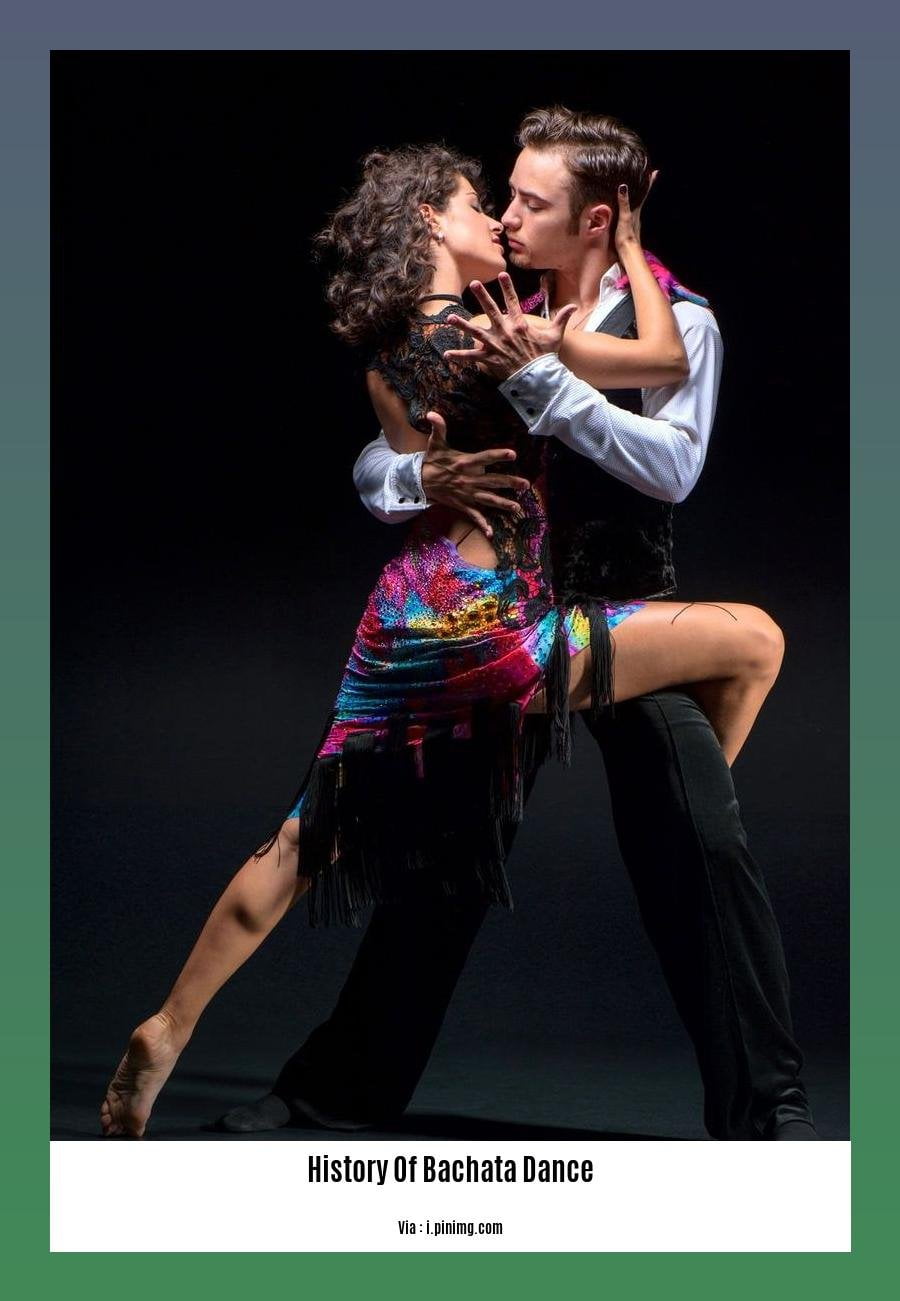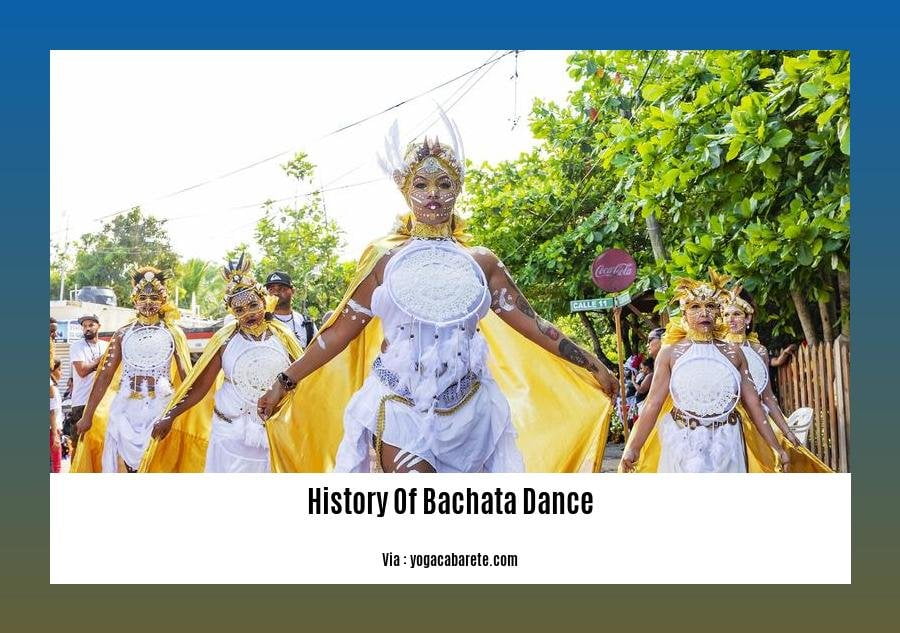Embark on a captivating journey through time as we unravel the rich history of bachata, a captivating dance form that has captivated hearts and souls worldwide. From its humble beginnings in the vibrant Dominican Republic to its global recognition today, bachata has undergone a remarkable evolution. Prepare to be enthralled as we delve into the origins, influences, and cultural significance of this alluring dance. In this comprehensive exploration, we’ll trace bachata’s lineage, revealing its deep roots in other Latin dance styles and its profound impact on popular culture and society. Join us as we uncover the captivating story of bachata, a testament to the power of rhythm, expression, and cultural exchange.
Key Takeaways:
- Bachata emerged in the mid-20th century within the Dominican Republic and the Caribbean.
- It blended African rhythms, Cuban son, and bolero influences.
- Initially, it was played primarily in brothels and bars, leading to societal rejection.
- Despite its popularity in the 1960s, it faced resistance due to its association with lower socioeconomic classes in the Dominican Republic.
**History of Bachata Dance**

Bachata, a vibrant and sensual dance form, with its infectious rhythms and captivating moves, has captured hearts worldwide. But how did this dance, once confined to the humble streets of the Dominican Republic, become a global sensation? Let’s delve into the rich history of bachata dance, tracing its evolution from humble beginnings to international acclaim:
The Roots of Passion: A Humble Beginning
Emerging in the mid-20th century, bachata’s origins can be traced back to the vibrant streets of the Dominican Republic. This captivating dance form emerged from the fusion of various influences, including African rhythms, Cuban son, and bolero. Initially played in brothels and bars, bachata’s sensual nature led to its rejection by the upper echelons of society. Despite these challenges, bachata’s infectious rhythms and passionate moves resonated with the masses, particularly the lower classes, who embraced it as a form of self-expression.
Overcoming Adversity: The Road to Acceptance
In the 1960s, bachata experienced a surge in popularity, captivating the hearts of Dominicans across the country. However, the dance continued to face resistance due to its association with the lower classes and its perceived immorality. Undeterred by these challenges, bachata’s proponents worked tirelessly to change society’s perception of the dance. Through radio broadcasts, live performances, and relentless promotion, they gradually chipped away at the stigma surrounding bachata, paving the way for its eventual acceptance and widespread recognition.
Global Recognition: A Worldwide Phenomenon
The 1990s marked a turning point for bachata, as it began to captivate audiences beyond the borders of the Dominican Republic. International artists, intrigued by bachata’s unique blend of sensuality and passion, began to incorporate it into their music and performances. The dance’s popularity skyrocketed, spreading like wildfire across the globe. Today, bachata is a beloved dance form, celebrated in dance studios, clubs, and festivals worldwide. Its captivating rhythms and sensual moves have won the hearts of people from all walks of life, solidifying its status as a global phenomenon.
If you’re interested in how Bachata music emerged and influenced the music industry, don’t miss this comprehensive history of bachata music.
You won’t believe how far badminton has come in the Philippines; read the history of badminton in the Philippines to learn more.
From the humble beginnings to the complex rules of today, history of basketball rules has an interesting journey.
For a cinematic journey through time, explore our history of cinema timeline and see how movies have evolved over the years.
History of Bachata Dance in America

Bachata has had a profound impact on the world of dance and has become immensely popular in America. This distinctive fusion of rhythmic beats, sensual movements, and captivating lyrics has captured the hearts of dancers and music enthusiasts alike, leading to its widespread recognition and adoption. Let’s delve into the compelling history of bachata in America:
A Humble Beginning:
- In the mid-20th century, bachata emerged in the Dominican Republic, originating from the vibrant blend of African, Cuban, and European musical influences.
- Initially dismissed as “music of the poor,” bachata’s infectious rhythms and heartfelt lyrics resonated deeply with the marginalized communities who embraced it.
The Road to Acceptance:
- In the 1960s, bachata began to gain traction beyond the Dominican Republic as it spread to neighboring countries, including Puerto Rico and Cuba.
- Despite facing resistance from the upper classes due to its association with the lower socioeconomic strata, bachata persevered, captivating the masses with its raw emotional power.
The Golden Age:
- The 1980s marked a turning point for bachata as it gained widespread recognition and acceptance throughout Latin America.
- Pioneering artists such as Juan Luis Guerra, Antony Santos, and Luis Vargas catapulted bachata to new heights, captivating audiences with their soulful melodies and enchanting lyrics.
Crossing Borders:
- The bachata wave eventually crossed borders, reaching the shores of the United States in the 1990s.
- New York City, with its vibrant melting pot of cultures, became a hub for bachata, providing a fertile ground for the genre’s growth and popularity.
- Dance schools and social gatherings dedicated to bachata mushroomed, attracting enthusiasts from all walks of life, eager to embrace this captivating dance form.
A Global Phenomenon:
- In the 21st century, bachata exploded onto the international stage, captivating audiences worldwide with its infectious energy and romantic flair.
- Today, bachata has become a global phenomenon, celebrated in dance studios, social gatherings, and international competitions, uniting people from diverse backgrounds through the shared love of this captivating dance.
Conclusion:
Bachata’s journey in America has been a remarkable tale of resilience, acceptance, and global triumph. From its humble origins to its widespread recognition, bachata has captivated hearts and ignited passions, leaving an indelible mark on the world of dance and music.
Key Takeaways:
Bachata’s Roots: Emerged in the Dominican Republic in the mid-20th century, influenced by African, Cuban, and European musical traditions. Initially associated with the lower classes, it faced resistance from the upper classes.
Gaining Popularity: In the 1960s, bachata began to spread beyond the Dominican Republic, reaching neighboring countries like Puerto Rico and Cuba. Its popularity soared in the 1980s with the rise of iconic bachata artists.
Crossing Borders: Bachata arrived in the United States in the 1990s, finding a home in New York City’s diverse cultural landscape. Dance schools and social events dedicated to bachata flourished, attracting enthusiasts from all backgrounds.
Global Phenomenon: In the 21st century, bachata exploded onto the international stage, capturing hearts worldwide. Today, it is a celebrated dance form enjoyed in dance studios, social gatherings, and competitions, uniting people through the shared love of bachata.
Sources:
FAQ
Q1: What are the main influences on bachata music and dance?
A1: Bachata is influenced by a blend of African rhythms, Cuban son, and bolero.
Q2: Why was bachata initially rejected by some sectors of society?
A2: Initially associated with lower-class communities and played in brothels and bars, bachata faced resistance from higher levels of society due to its perceived association with a lower social status.
Q3: How did bachata gain popularity in the Dominican Republic?
A3: Bachata gained popularity in the 1960s as it resonated with people seeking a way to express their emotions and experiences during times of political and social turmoil.
Q4: What factors contributed to the resurgence of bachata in the 1980s and 1990s?
A4: The rise of bachateros like Juan Luis Guerra played a significant role in the resurgence of bachata during the 1980s and 1990s, helping to popularize it both nationally and internationally.
Q5: How has bachata evolved in the 21st century?
A5: In the 21st century, bachata has continued to evolve with the emergence of new styles, variations, and fusion with other dance forms, solidifying its position as one of the most popular Latin dance styles worldwide.












